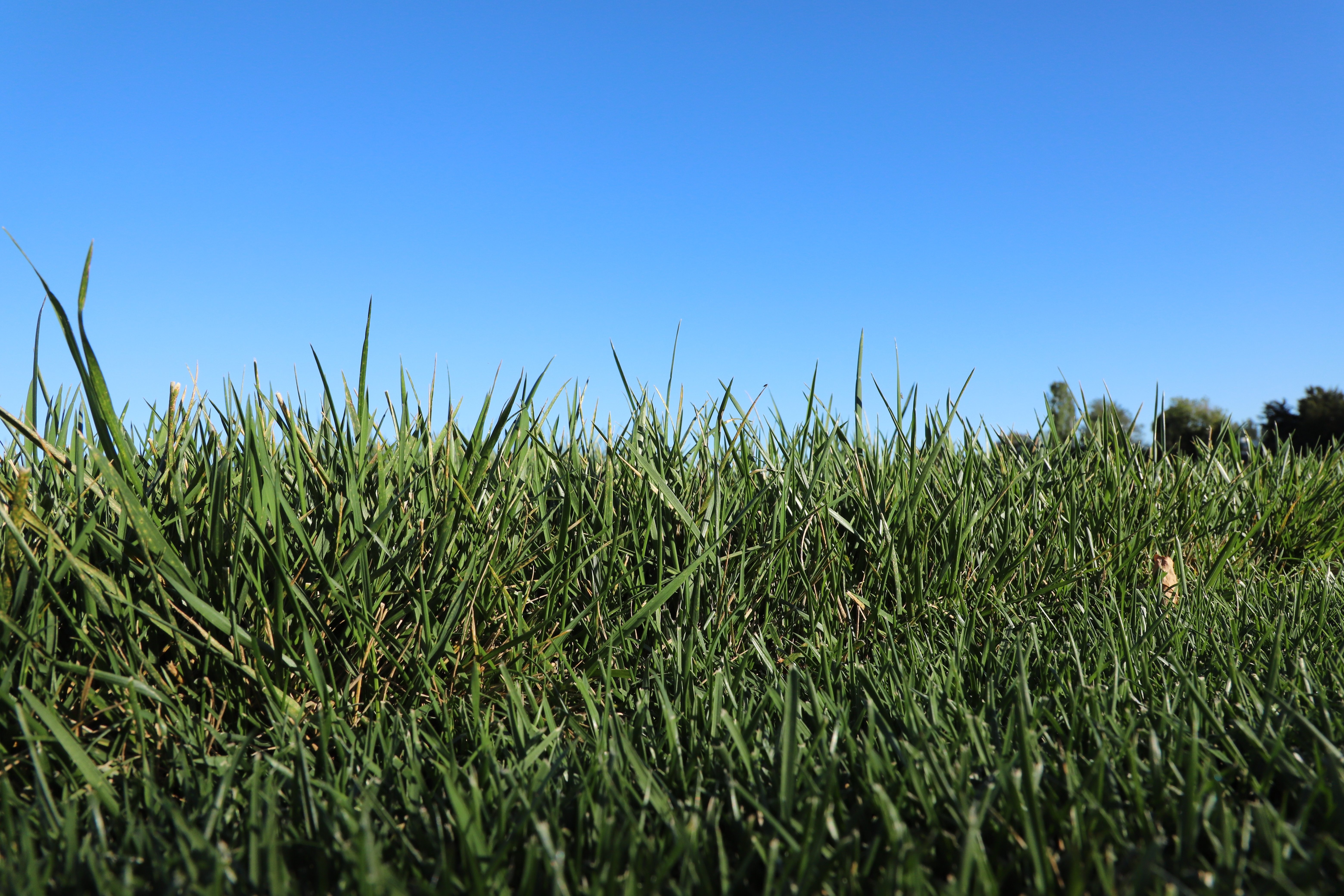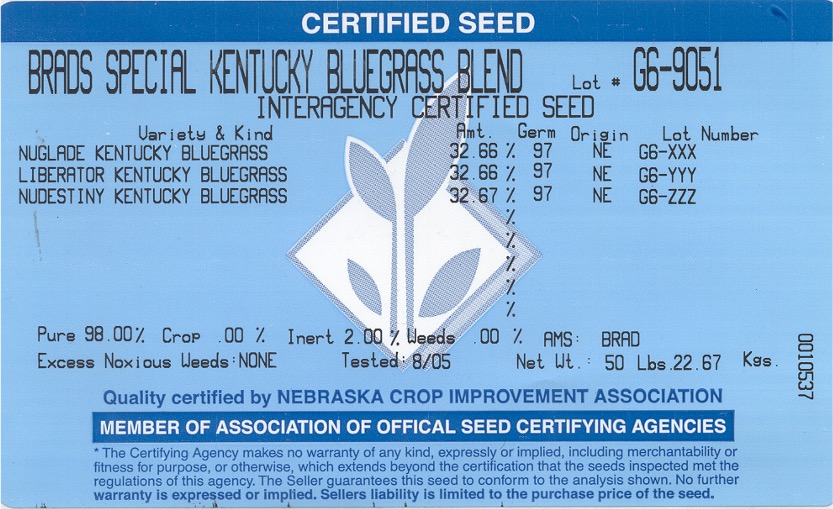
Tuesday, August 15, 2023
Author: Amanda Folck, Turfgrass Extension Educator
We are officially into turfgrass overseeding season. The suggested timing for turfgrass overseeding for cool-season grasses is from August 15 to September 15 in eastern Nebraska and August 15 to September 5 for western Nebraska. But why this specific time for overseeding during these dates?
Less Weed Competition
Historically at this time of year, the air temperature starts to cool down towards fall. With this decrease in temperatures and humidity, weed competition decreases. This leads to fewer weeds for competition with newly established turfgrass from seed.
Favorable Growth
Cool-season grasses like Kentucky bluegrass and tall fescue are more favorable for growth in cooler temperatures from August to early November. In conjunction with less weed competition, this allows more timing and is preferred for growth in the fall for cool-season grasses than in the spring.
Seed Selection for Overseeding
This will depend on the goal for your future grass area. With cool-season grasses, Kentucky bluegrass is preferred in western Nebraska, and tall fescue in eastern Nebraska. Kentucky bluegrass is slower to germinate (10 to 28 days) than tall fescue but can recover from traffic due to its rhizomatic growth.
Remember to read the seed label of the turfgrass seed bag to check the information of what type of grasses are in the seed bag. Watch for other information that can cause issues after seeding from VNS (Variety Not Stated) to annual ryegrasses (also known as Italian Ryegrass). Look for turfgrass seed bag mixes that are seed certified with a blue tag shown in Figure 1. These seed contents in the seed bag went through certification from the Nebraska Crop Improvement Association. The blue label also verified there are seeds stated in the bag is what is on the label.

Figure 1. Nebraska Crop Improvement Association certified seed label for Kentucky bluegrass seed mix (from Roch Gaussoin).
For more information on grass seed selection, refer to the NebGuide on choosing the grasses and buying seed for lawns in Nebraska and the Northern Great Plains (https://turf.unl.edu/NebGuides/Grassesforlawns2012k.pdf).
Steps in Overseeding
- Temperature check: The air temperatures have to be around 60 to 75 degrees F for cool-season grasses. If the air temperatures are warmer than 80 degrees F, there is a higher chance of cool-season turfgrass seed not growing effectively.
-
Cultural practices: After seed selection and the right temperature for cool season grass growth, aerification can be used before applying the turfgrass seed. This will help in allowing more seed establishment and less compaction in the soil. Soil testing is another tool to consider what nutrients are already in the soil. The results of the tests will help determine the amount of fertilizer to use before seed application and for fall fertilization, if not done so already. For more information on soil testing, refer to the NebGuide: Soil Testing.
-
Seeding Rate: The rate for seeding varies on the type of grass that you will be applying and will be less than a new seed application. The rate of Kentucky bluegrass for overseeding will be around 2 lbs. per 1000 ft2 (normally 1-3 lbs. per 1000 ft2 for new grass areas). The rate for overseeding tall fescue is 3-4 lbs. per 1000 ft2 (normally 5-8 lbs. per 1000 ft2 for new grass areas).
-
Turfgrass seed application: During the seed application, apply in different directions to help with turf cover during seed germination. For the application of seeding, the drop spreader is preferred due to its even application. A rotary spreader can also be used but be mindful not to apply seed when there are heavy winds.
-
Water management: Water application for overseeding must be done immediately after seeding. Apply water to the overseeding sparingly up to three times a day in the first week and lessen over time. This will have adequate moisture for seed establishment. Too much water during the overseeding can lead to susceptibility of turfgrass diseases to possible loss of the applied turfgrass seeds.
-
Mowing: Nearly after a month of growth from seed germination reaches a height for mowing compared to other non-overseed grasses, start mowing the grass. For the first mow, mow at the highest height. The second, and third mowing will take off a little more mowing than the previous one until the preferred height of the grass is reached. There should not be a long gap for in between mowings. Do not wait until the grass grows too tall. Mowing more than 1/3 of the grass during the first mow or any time can lead to damage to the grass.
For more information on starting seeds in a new area, refer to the NebGuide: Establishing Lawns from Seed. For specific timings for fertilizing after seeding, refer to the Cool Season Lawn Calendar for Western Nebraska or Cool Season Lawn Calendar for Eastern Nebraska.